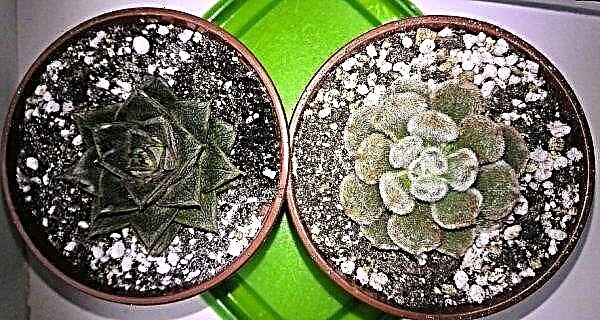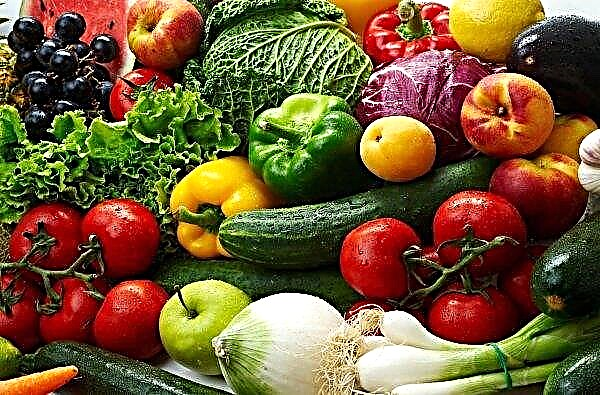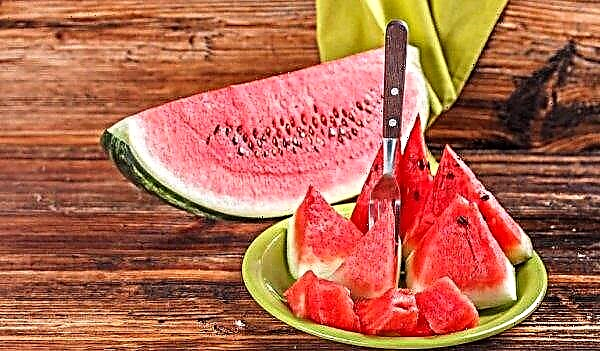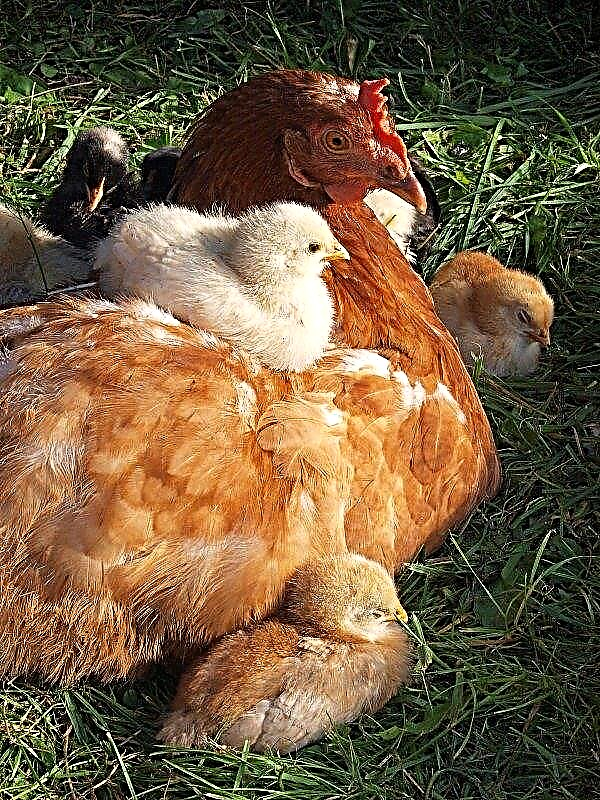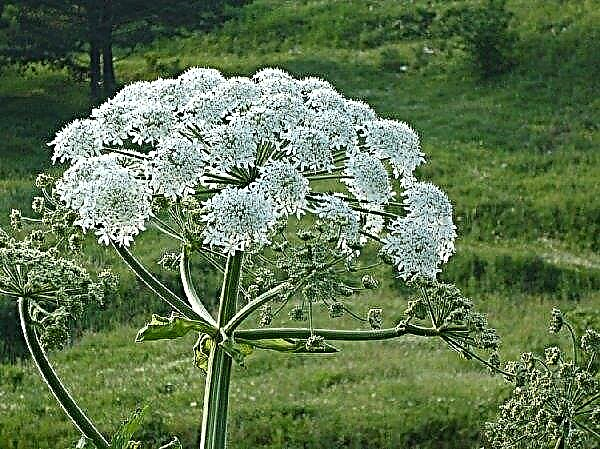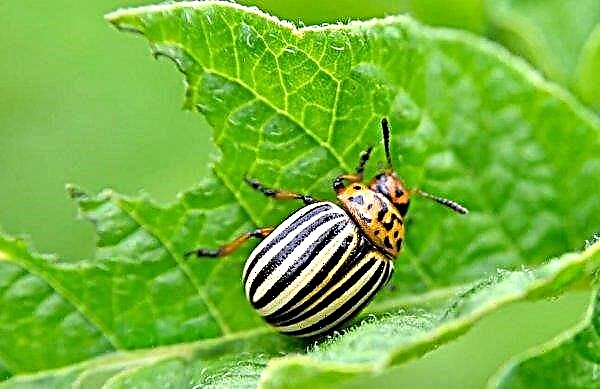Sometimes gardeners have a situation where there are a lot of ovaries on cucumbers, but the fruits do not grow. Sometimes the ovary grows poorly or completely stops growing. There is a whole list of reasons for this, and the grower needs to know about them.
Why does the ovary on cucumbers not grow or grow poorly and what should I do
If the ovaries ceased to develop further, it is necessary first to analyze the growing conditions and related factors. The reason, most likely, lies in obvious things and can be solved by simple manipulations.
Did you know? Cucumber is a vegetable crop from the Pumpkin family. It began to grow 6 thousand years ago at the foot of the Himalayas in the territory of modern India.
Inappropriate temperature
First of all, one should think about the microclimate when growing cucumbers in a greenhouse. If the temperature regime is violated, problems with the development and growth of the ovaries may appear. The plant reacts very sharply to inappropriate conditions.
A similar situation can occur in the following cases:
- at indicators below + 12 ° С, the ovaries cease to grow and often fall off, since under such conditions the bush cannot receive nutrients from the soil;
- at indicators within the framework of + 12 ° ... + 15 ° C, the process of setting and development of fruits is extremely slow;
- with sharp changes in day and night temperatures, especially if at night it is within +10 ... + 12 ° С, it is included in the growth of tops, leaves become large, but because of this, cucumbers are not tied;
- at temperatures above + 35 ° C in combination with too dry air, it does not affect the fruiting process in the best way and also leads to the result indicated above.
To solve the problem, you should set the correct temperature regime in the greenhouse. During the day, the thermometer should be at the level of +20 ... + 25 ° С. At night, the temperature can drop no lower than + 17 ° C.
Video: why the ovaries on cucumbers do not develop
Wrong watering mode
A bad situation can happen if the wrong approach to irrigation of the soil.
The following errors are especially detrimental to the condition of the plant:
- too much watering;
- moistening the soil with cold water;
- watering in a scorching sun;
- insufficient irrigation.

The rules for competent watering are as follows:
- water should be warm;
- water cucumbers after 18:00;
- allowing long-term drying of the land is highly undesirable;
- stagnation of water in the ground should not be allowed;
- with the active development of fruits, moisten the soil every 2–4 days;
- until the first flowers appear, the bushes need to be sprinkled;
- at the time of flowering, cucumbers should be transferred to soil irrigation.
Important! Violations of irrigation rules can also lead to the emergence and development of rot and fungal infections.
High landing density
A common cause of cucumber development problems is the high density of plantings. Different varieties need different distances between bushes and rows. If you do not follow the instructions for planting a particular variety, a very small amount of soil will fall on one bush.
But it is from the earth that the plant receives useful substances, which, in turn, contribute to the healthy growth of the bush. Such a mistake often happens both when planting seedlings in a greenhouse, and when growing in open ground. Typically, the distance between the bushes should be at least 0.2 m. Rows should be planted at a distance of at least 0.6 m.

Unformed bushes
As in the case of dense plantations, nutrients may not be enough in the presence of extra shoots. To form a bush, you need to remove stepsons in time. Stitching is necessary so that the plant does not waste energy on growing unnecessary and barren stems.
Regularly pinch:
- all stepsons in the sinuses of 3-5 lower leaves;
- stepsons growing in the sinuses of other stepsons are removed from the first leaf plate;
- unnecessary shoots from the sinuses above the 5th leaf are removed from the 2nd leaf plate.
Did you know? Information about cucumbers can be found in ancient letters. So, they are mentioned in the Bible as vegetables grown in Egypt.
Rare fruit picking
Small ovaries may indicate that the owner too rarely collects fruits from the bush. As a result, the plant spends energy on strengthening shoots with ripe fruits, while young stems weaken. In order to avoid such problems, when the first crop appears, cucumbers must be removed every 2-3 days. When the fruits begin to actively ripen, which often happens in August, it is advisable to collect them daily.
Micronutrient deficiency
Lack of growth of ovaries may indicate a shortage of useful elements. This means that fertilizers are not applied in sufficient quantities. The owner of the garden or greenhouse needs to think about how to feed the plants.
You can resort to spraying.
Foliar top dressing is proposed to be performed according to such a plan:
- the beginning of flowering - 80 g of urea per 20 liters of water;
- the beginning of fruiting - an infusion of ash in the ratio of 1 glass per bucket of water;
- decrease in yield at the end of ripening - by 5 l of water 6-7 g of urea.

It is also advised to feed cucumbers by soil.
The main root dressing is recommended to be carried out three times:
- budding - 1 tbsp. l Agricola-5 preparation for 5 l of water;
- flowering - 20 g of water 1 g of boric acid, 0.2 g of zinc sulfate and 0.8 g of manganese sulfate;
- fruiting - 1 hour. "Nitrofoski" and 1 tbsp. Effekton means on 5 l of water.
On average, during the growing season, cucumbers need to be fed every 12-14 days. It is advisable to alternate minerals and organics.
Important! When preparing top dressings, it is important to clearly follow the cooking instructions and not to use doses higher than normal.
Bad pollination
Perhaps the cause of the unpleasant situation with poor setting of cucumbers is insufficient pollination.
There are several ways to solve the problem:
- ventilate the greenhouse so that insects that spread pollen can fly in and pollinate the bushes;
- independently shake off pollen from empty flowers (male buds) on the ovary (female buds) using a soft-brushed brush.
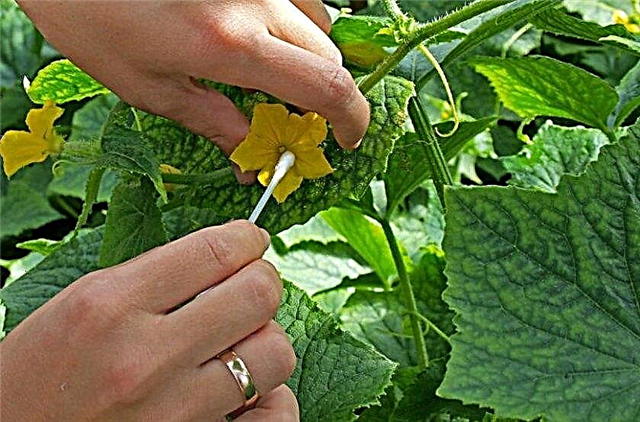
How to prevent problems when growing cucumbers
So that the problem does not have to be solved upon its occurrence, you should resort to some measures in advance:
- avoid too high or low temperature, as well as its differences;
- pour warm water in the evening, avoiding excessive dryness or stagnation of water;
- in time to plant bushes;
- plant bushes at a sufficient distance from each other;
- perform foliar and root dressing according to a predefined plan;
- in a greenhouse it is better to plant self-pollinated species of cucumbers.




